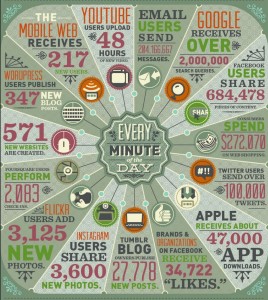Successful marketers focus on amplifying consumer behavior. Come in today. 30% off, this weekend only. Buy one get one free.
Green marketers, on the other hand, are typically about changing consumer behavior. Consume less. Recycle more. Go green. But is that the correct approach?

Changing behavior is tough. Especially if the behavior has been engrained in us since childhood. I just read Dan and Chip Heath’s relatively new book, Switch, How to change things when change is hard. We are currently working on two education movements in Arizona: Expect More Arizona, and Mesa Counts on College, and Nicole Magnuson of EMA gave us the book as a primer to our work with their campaign. After all, what can use more positive change than our educational system?
The Heath brothers drew on a wealth of behavioral material to write Switch, which comes down to these five simple steps:
- Shrink the challenge so it’s not daunting, but doable
- Point to a meaningful outcome
- Give your consumer clear, easy steps to take to get there
- Focus and build on the bright spots of their actions throughout their journey
- Rally the community around them
Switch describes behavior change as motivating a rider (The intellectual left brain prone to analysis paralysis) and his elephant (The stronger, more unwieldy emotional right brain) to take the correct path to the proper destination. This metaphor is borrowed from Jonathan Haidt, and his book, The Happiness Hypothesis: Finding Modern Truth in Ancient Wisdom.
So after reading several behavior change books like Switch, and listening to the big companies at the Sustainable Brands Conference earlier this year, one thing has become clear to me: Promoting sustainability is about amplifying the positive behaviors consumers are already taking in their consumption habits as opposed to trying to change them. Change will come from how susceptible your consumer is to community influence (They call this, “Rallying the herd”), which is a hard individual behavioral aspect to anticipate and manipulate. Let the herd do that.
 Accentuate the Positive
Accentuate the Positive
Rather than fanning “the world is on fire” hysteria hoping to scare change out of consumers, green marketers should point to the positive sustainable behaviors that are working. For example:
- When you donate to Goodwill, you and your community keep millions of tons of useful items out of landfills, in addition to helping put people back to work
- Turning off the water while you brush your teeth and other basic water conservation habits can save you hundreds, even thousands of dollars per year (Use to your monthly water bill to prove it)
- And studying with your child just 20 minutes every day will have a measurable impact and improve their success in school (Just watch that report card).
If you’re a chief sustainability officer, green marketer, educator, parent or someone charged with amplifying lasting behavior change in your organization or movement, I highly recommend Switch, as well as the dozens of other books they used as resources for this fun and educating text.
What book, TED presentation, or speaker have you been exposed to recently that will amplify my research in behavior change?











at 10:29 am
Looks like a great book – thank you, Park, for the suggestion! I’m glad you enjoyed SB12 & hope to see you at SB13.